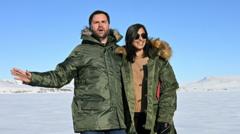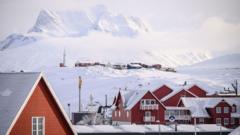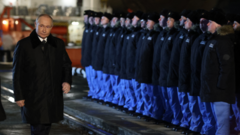Pituffik Space Base, formerly Thule Air Base, is crucial for American defense, particularly in missile detection. With a high-level U.S. delegation visiting, the site’s historic and strategic role is more relevant than ever.
The Strategic Importance of Pituffik Space Base in Greenland

The Strategic Importance of Pituffik Space Base in Greenland
Understanding the military significance of the U.S. installation in northwestern Greenland amidst renewed political interest.
Since World War II, the Pituffik Space Base, previously known as Thule Air Base, has served as a vital military installation for the United States in northwestern Greenland. This location is often overlooked by many Americans but stands as a pivotal point for national defense. “It is quite literally the outermost eye of American defense,” explains Peter Ernstved Rasmussen, a Danish defense analyst. The base is responsible for monitoring missile launches, determining their trajectories, and initiating defensive countermeasures.
Recent attention on Pituffik has been reawakened by President Trump’s commitment to integrate Greenland into the United States, with a high-level delegation, including Vice President JD Vance, slated to visit the base shortly. Approximately 150 members of the U.S. Air Force and Space Force are stationed there full-time, engaging in missile defense operations and space surveillance. The Advanced Early Warning Radar deployed at the base is capable of detecting ballistic missile activity at its initial stages.
Additionally, each summer sees around 70 personnel from the New York Air National Guard support scientific missions at Pituffik, utilizing the military’s only ski-equipped aircraft to assist researchers and transport materials across the glacier-topped region. Notably, Pituffik is the solitary U.S. military presence in Greenland, emphasizing its uniqueness in American defense strategy.
The roots of U.S. military engagement in Greenland trace back to World War II. When Nazi Germany occupied Denmark in 1940, it rendered Greenland, then under Danish control, vulnerable and unprotected. In response, the United States discreetly negotiated terms with Denmark's ambassador in Washington, enabling U.S. forces to establish airfields and weather stations on the island without engaging directly with the German-controlled Danish government.




















